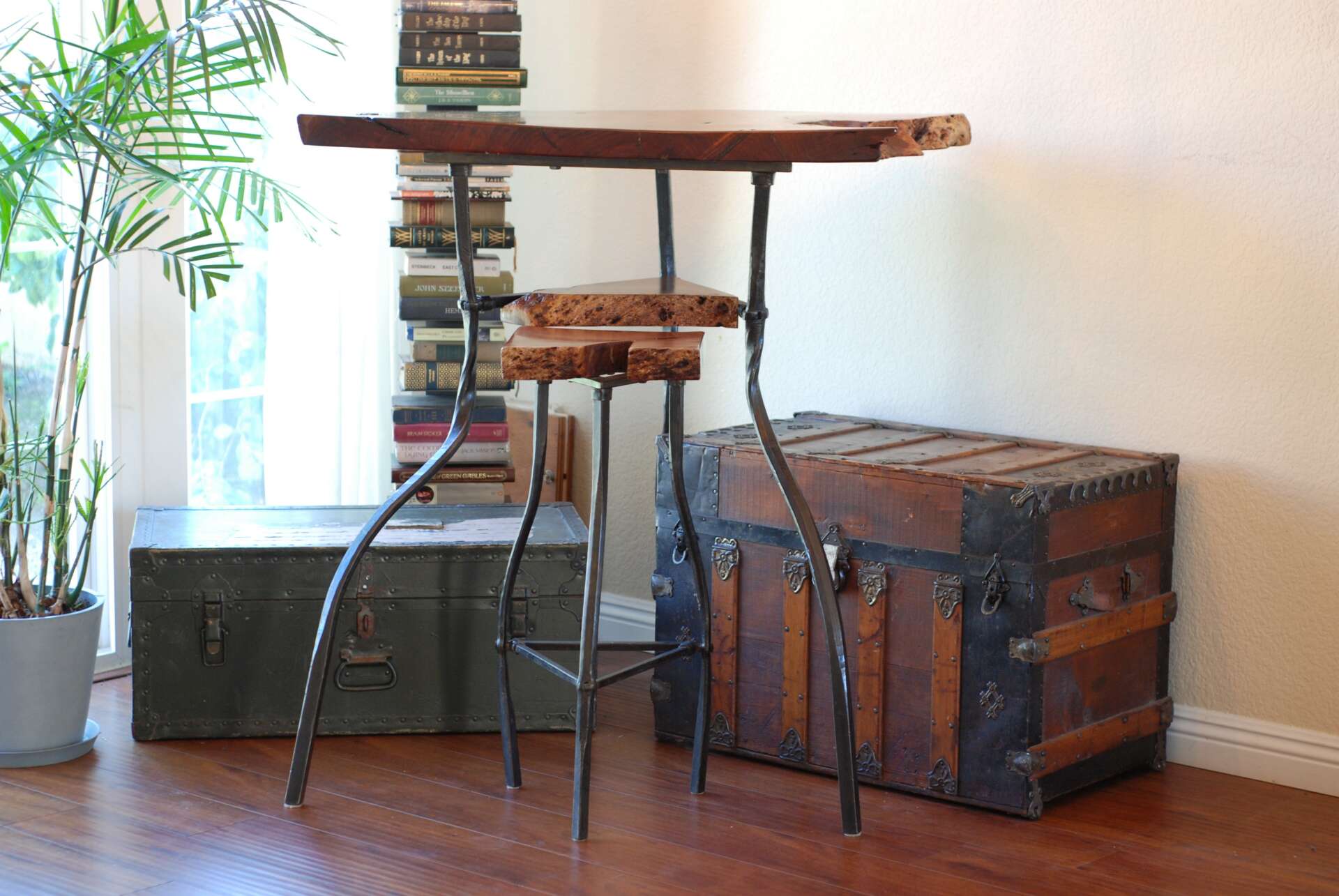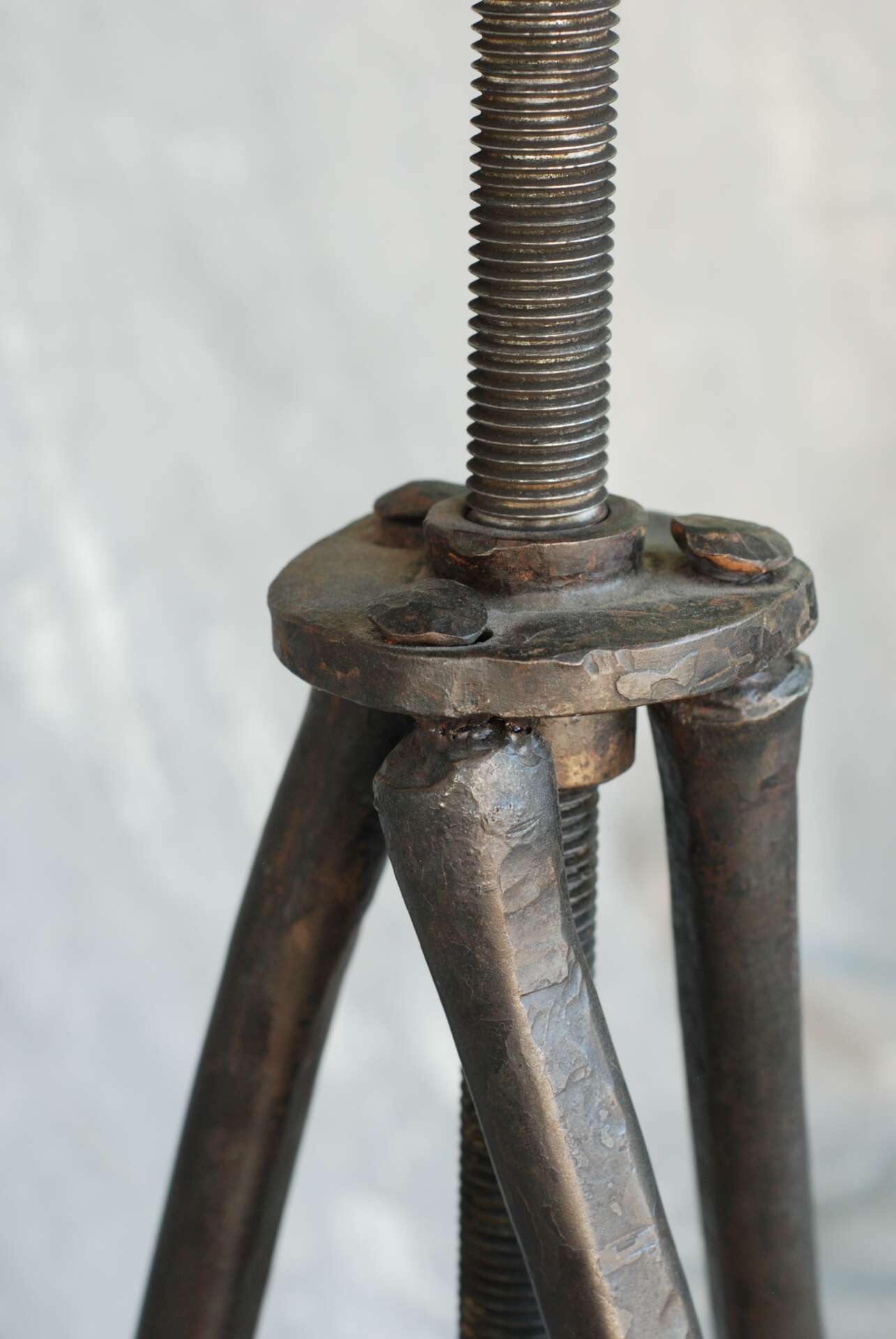We caught up with the brilliant and insightful Joy Fire a few weeks ago and have shared our conversation below.
Joy, thanks for taking the time to share your stories with us today Can you talk to us about a project that’s meant a lot to you?
I was once contacted by a client about a decorative cover for her koi pond. She lived in an area where the local racoons would occasionally raid her garden and make off with a snack of her decorative fish. The theme of the garden, which had won awards, was “under the sea”, and my client was known to lead local parades as the Kelp Queen. It was just as important for this cover to function properly as it was for it to be pleasant to look at and relevant to my client’s personality and interests. After many design, iterations and experiments, the final piece was a bronze, brass, and silver soldered koi pond cover that featured intertwining kelp strands and a hidden mermaid tail. It was an engaging challenge to design and fabricate something so unique and specific, and the client’s absolute delight in the result made it even more worthwhile.
The above example illustrates why I love my work, because it offers the opportunity to connect with people through their creative ideas. When I am contacted by a potential client I ask questions not just about their project, but about themselves, their space, and even their personal interests. I visit their home or the location the project will be installed to take pictures for design inspiration and observe the surroundings of where my work will end up, the colors, textures, and overall aesthetic that is already in place. This helps me to develop not just a relationship with the person, but an instinct about them and the kind of work that they will enjoy. I want to make something that fits both the person and the place. The most meaningful projects that I have worked on are the ones where this process has been the most successful.


Joy, before we move on to more of these sorts of questions, can you take some time to bring our readers up to speed on you and what you do?
I have been working with metal for thirteen years, starting as an undergraduate in Studio Art. As a student I was attracted to three-dimensional work and processes that were traditionally associated with craft. After graduation I became an apprentice at an ornamental ironwork company, where I enjoyed the physical and mental challenges of forging and welding metal, and the fact that we were making objects that were useful as well as beautiful. My employer allowed me to use the shop after hours, so I began making furniture and other functional and decorative objects.
In 2014 I moved and left my job. After a difficult time without a place to make my own work, I finally secured a small shop and started a business producing commissioned metalwork and designing and fabricating my own projects. Eventually I came to the point where I felt formal education was necessary to further my career, so I pursued an MFA at Claremont Graduate University. As a graduate student I continued to be interested in functional objects, especially furniture. The physical interaction with the audience that happens with furniture is more intimate than the act of looking at a sculpture. It offers a direct connection between me, as the maker, and those who encounter my work. Each swing of my hammer exists as a mark on the finished object, a record of my effort. The heating, bending, and stretching that forged metal undergoes translates to something that vibrates with a unique energy and inhabits space differently than objects made with other processes. Through my practice as a blacksmith and designer I can contribute something unique to the world, and, in the process, elevate blacksmithing and introduce it to a larger audience.
The pursuit of blacksmithing has been an important guide throughout my life, and I want to make sure the opportunity to learn the craft is available to everyone. This is why I am involved with Society of Inclusive Blacksmiths (SIBs). I am on the governance committee for this nonprofit organization, which offers support to those who have historically been marginalized in the field of blacksmithing. We fundraise to provide grants to new and established smiths, partner with schools and organizations to offer scholarships for blacksmithing classes and foster a vibrant and inclusive online community. I am proud of my work with SIBs, and my own progress as a craftsperson. I look forward to continuing to learn and develop new and exciting forged metalwork and support others who wish to do the same.


Let’s talk about resilience next – do you have a story you can share with us?
I can’t point to one specific time or event that illustrates resilience because for me resilience is a state of being. I am a blacksmith, an artist, a designer, a small business owner, a teacher, a craftsperson, a student, and so on. Each of these identities have different definitions of what success might be and different paths to get there. Resilience is the ability to pursue success along each of these paths. It is the drive to find new opportunities, the flexibility to pursue them no matter what, and the toughness to pick myself up and try again when something I have pursued doesn’t work out. Success is not a specific destination that I will one day reach, it is something that will constantly evolve as my skills and work improve. But I do know that no matter where my path leads maintaining resiliency will allow me to continue to travel it.


How can we best help foster a strong, supportive environment for artists and creatives?
I believe that people can be their most creative and satisfied selves if they have their basic needs met. While it is true that some very successful people were once “starving artists” the idea that suffering leads to creativity is largely a myth. The best way to cultivate creativity in our society is providing affordable and comfortable housing, access to quality health care, and flexible and well-paying jobs. Meeting these basic needs will allow so many more people to pursue their creative ideas. When I am stressed about paying my bills I am filled with anxiety and am at my least creative. Working as a welding teacher at a community college has alleviated that anxiety and freed up mental space and energy that I can put towards artistic work. I wish everyone could find a similar opportunity.
Artists and other creative workers also need access to space. Space is a premium where I live in Southern California, and I am very fortunate to have found somewhere to set up shop, but many are not so lucky. Shared workspaces with shared access to tools and classes to learn how to use them, could generate a lot of new creativity. But even if more of these places existed not everyone would be able to afford to access them, so we come back to needed financial stability and having basic needs met. If we as a society could provide basic needs and access to creative spaces, we could open the doors for new people to pursue their artistic ideas and contribute to the creative ecosystem, which would expand exponentially with these contributions.

Contact Info:
- Website: https://www.joyfireblacksmith.com/
- Instagram: https://www.instagram.com/joyfire/
Image Credits
Keri Oberly Pierce Kelly Valenzuela


